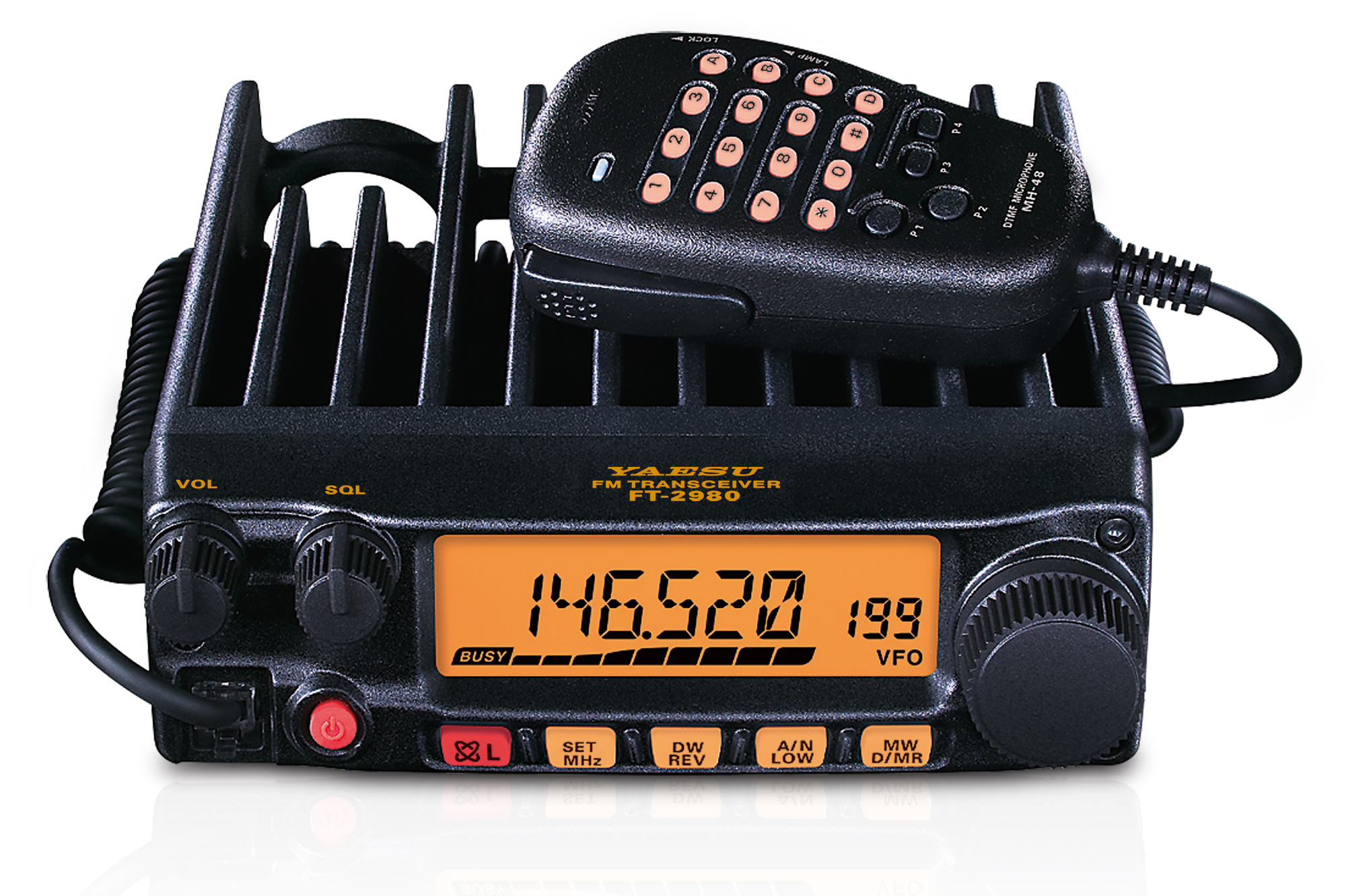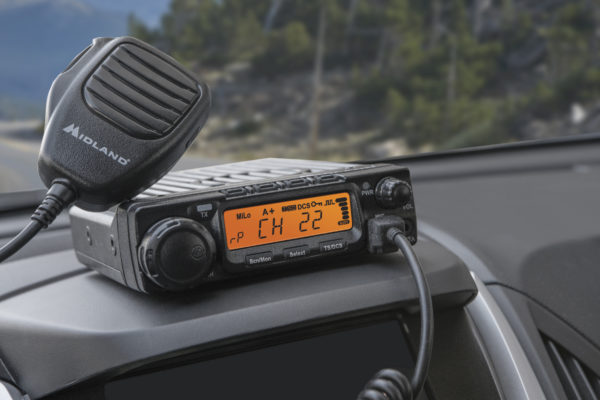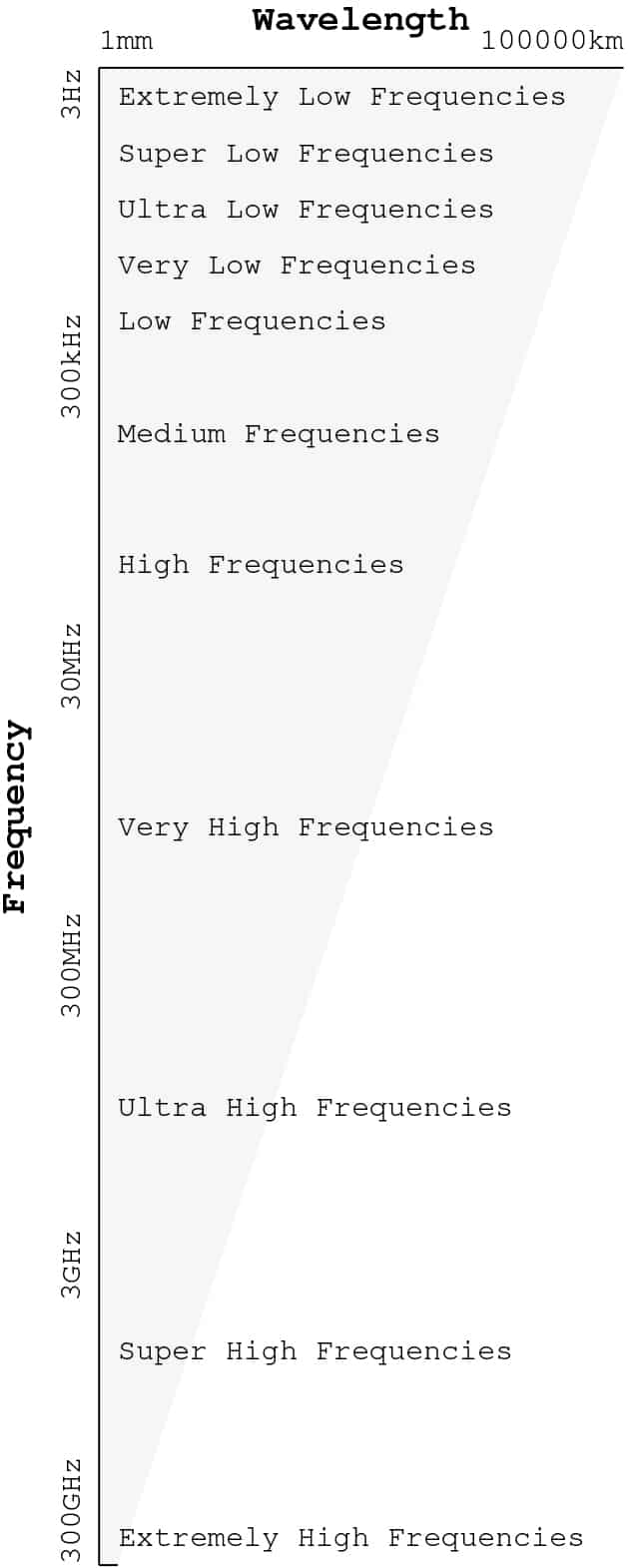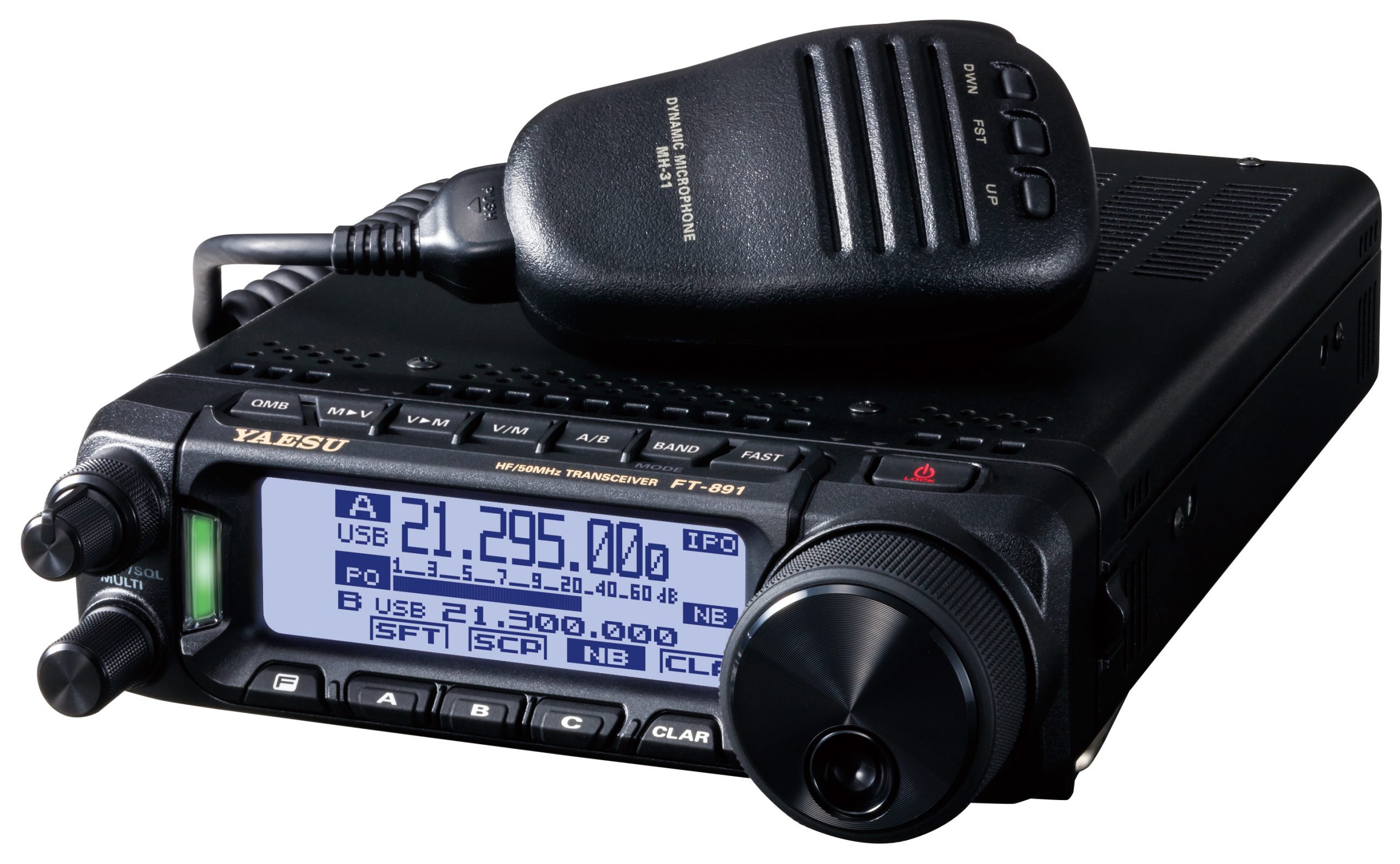By Scott Jensen
Editor’s Note: This article was penned nearly a decade ago, and it remains just as relevant today. It is also important to note that the 2 meter frequency 146.460 has become ubiquitous, and unfortunately has been adopted and promoted among groups without attribution. The frequency originally gained popularity nearly 15 years ago by the 4WDTrips.net community. We all owe them a thanks for creating what would become the “overlanders channel”

19 JULY 2005 – Hiker Jason Jacks of San Dimas, California, became lost near the region of Southern California’s Mt. Baldy. Beyond mobile phone range, Jacks used his handheld radio to make contact with another radio user, Burton Brink, who contacted and collaborated with emergency personnel. The Los Angeles County Sheriff’s Department dispatched it’s Rescue Air-5 helicopter for rescue. Brink directed the helicopter pilot to Jacks’ location. Within two hours of the initial call for help, Jacks was airlifted to safety.
Radio communication fulfills many vital needs for us. Broadcast television, mobile phones, GPS, wireless Internet connections, and satellite-delivered music are just a few of the technologies carried by radio waves, besides the obvious talk and music radio on our AM/FM dials. Imagine for one minute the world, life, and travel as you know it without radio. As wonderful or utopian as that concept might seem, there is no doubting radio’s benefit to Jason Jacks, or to thousands rescued yearly on land and sea after calling for help via radio.
As nature- or adventure-seekers we are normally at the mercy of how far our voices travel, as more often than not our journeys lead us to places and down tracks less seen, into a world only infrequently inhabited by other humans. Enter radio again, this time into your backpack or your vehicle or your vessel. On a 4×4 trail, it’s simply a waste of time to keep flashing your headlights at a vehicle a half-mile in front of you in the hope they’ll stop to talk.
Radio is defined as the wireless transmission of signals in the form of electromanetic radiation. Microwaves, infrared, X-rays, and visible light are also electromagnetic radiation, but with frequencies above the radio frequency (RF) range.
All electromagnetic radiation, including radio, has a frequency and an associated wavelength. Frequency is listed in hertz (Hz) which is cycles per second, or the number of waves that pass a given point in one second (remember that these waves are traveling at the speed of light). Higher frequencies are designated in kilohertz, KHz (a kilohertz is 1,000 cycles per second), megahertz, MHz (one million cycles per second), and gigahertz, GHz (one billion cycles per second). Most commercial radio bands fall between 300 KHz and 300 GHz.
Here is the key to radio communication: Different frequencies have different abilities to propagate (travel) long distances through the atmosphere, or to bend or refract in the atmosphere and reach beyond the local horizon.
There is a great swath of radio frequencies, but only a few subsets of these are practical for commercial and government use. An even smaller subset is available for personal use. The three frequency ranges that constitute the majority of voice and data communication are the High Frequency (HF), Very High Frequency (VHF), and Ultra High Frequency (UHF) bands.
HF is characterized by the frequencies between 3 and 30MHz, and due to its properties of having the Earth’s ionosphere reflect the radio waves is used for longer-distance communication. HF is also affected much more by atmospheric and electronics interference. Current Citizen’s Band (CB) radio falls within the HF band at about 27MHz. One drawback of HF is that antennas for HF need to be relatively large to be effective, and present a physical space problem for many installations.
VHF is the band from 30 to 300MHz. It is valued highly for both personal and commercial use due to its short-distance propagation. VHF and higher frequencies usually are not reflected by the ionosphere and thus are perfect for terrestrial navigation systems and weather stations where radio waves are meant to be local. Frequencies here and above are considered line-of-sight as they do not extend beyond the horizon. In some conditions, VHF is able to extend its range beyond the horizon through several methods, one being tropospheric ducting, in which the signal can bend and refract for many hundreds of miles, making it an early favorite for television and FM radio stations. Popular “2 meter” radios fall within the VHF range as the wavelength is approximately 2 meters in length at about 150MHz in frequency.
UHF acts much the same as VHF with the benefit of having a physically short wavelength, so the size of equipment such as antennas can be kept very small. Mobile phones employ the UHF band.
CITIZEN’S BAND RADIO
Recognizing the new need of radio uses in the U.S. and across the World, in 1945 the (then) Federal Trade Commission made available several bands (a limited range of frequencies as to not interfere with other commercial and military frequencies) to the general public for citizen’s use. This became the CB service. Depending on your age, other than a child’s ‘Walkie-Talkie,’ CB is most likely the first 2-way communications device you used, and possibly still use in your vehicle today.
CBs are inexpensive, easily obtained, and (since 1975 in the U.S.) do not require any license to use. They are the lowest common denominator for radio communication in the field. With 40 channels (discreet frequencies), CB fills a perfect low-end consumer market need. Rockcrawling in Moab? Exploring the backwoods of Maine? The CB will work great to keep in contact with friends less than a mile or so away. The CB band is also relatively consistent internationally, since many countries copied the CB service from the U.S.
One concern, however, is that very few travelers around the world continue to use CB, and contacting people in an emergency may be difficult. Mobile phones, and the ability to use them in surprisingly remote locations around the world, have taken the place of traditional 2-way radio as the medium for communication. This stated, many U.S. truckers along the Interstate Highway System still use CBs. In the U.S., we have a limitation in power (4 watts) in normal use, but simple, short-range communications CBs work quite well.

Yaesu’s FT-2980 80 W 2m Rugged FM Mobile
In order to achieve the best results from CB it is important to optimize two components: the antenna and feedline (coax). With any radio, most vertical antennas need a large metal ground plane called the counterpoise. For a mobile installation the best location for any vertical antenna is going to be in the middle of the most automotive sheet metal and as high as possible. The higher the antenna, the farther the potential range. The CB antenna that will generally provide the best performance is the 1/4 wave whip which is a 9 foot/275 centimeter metal rod, flexible enough to bend in tight locations like under trees. Smaller antennas will likely have degraded performance but may be a necessity if 9 feet of antenna is too tall.
Despite claims to the contrary, when installing the CB’s feedline keep the coaxial cable between radio and antenna as short as possible. Massproduced CB coax feedlines are often sold in 9- and 18-foot lengths which have a direct correlation to the CB wavelength and are designed specifically to act as an artificial counterpoise which may hide proper antenna grounding problems.
Some CB radios have the option of Single SideBand (SSB) and allow transmissions in this mode up to 12 watts, versus the 4 watt limit in normal AM mode. SSB radios only work with other SSB radios, so we must ensure all in our parties have this to be able to use it.
There are a number of other options available to private individuals operating radios in the U.S. MURS is the Multi-Use Radio Service, and is often considered the “VHF CB.” GMRS is the General Mobile Radio Service, which is the ancestor of the original CB service. GMRS is a close contender for overland communications, allowing higher power (50 watts) and the ability to employ repeaters (repeaters will be discussed later) with no test to get a license, just a fee. FRS (U.S.) and PMR446 (European Union) radios—those little handheld radios sold at almost every retail counter—are convenient, inexpensive, and are useful for short distance hikes and keeping in touch across campsites. Midland has entered the market en force, and offers multiple high-power and long-range handheld and mobile units like the MXT400

Midland MXT400 40 watt GMRS Radio
Where MURS and GMRS fail, however, is in international acceptance. From a North American standpoint, neither Mexico nor Canada accepts full GMRS and MURS services. Both MURS and GMRS radios are commonly used re-purposed commercial radios. FRS, with it’s extremely limited range at 1/2 effective watt, and fixed antenna requirement, is suitable for only very short range communication.
AMATEUR RADIO
Multiple vehicles crossing bulldust flats miles apart, sanely avoiding each other’s wake, press the limits of what the CB can handle. Enter Amateur (or Ham) Radio.
It is important to note that Ham Radio does not describe any particular radio or frequency band. Ham Radio is the license granted to use a great number of different radio frequencies set aside specifically for the hobby and public service of Amateur Radio, at significantly greater power levels than available to CB users: 1500 watts in the U.S., 400 watts in the U.K. Amateur Radio still provides a public service: The response to New Orleans after Hurricane Katrina was aided and assisted in part from Ham Radio operators, who act as a communications knowledge pool in disasters. Thus, in order to become a Ham Radio operator one must pass a test.
There are different levels of tests that provide an applicant with license grants to different frequency bands. The very first level test in the U.S. by the FCC is called the Technician Class license; for the majority of overland travel the Technician Class license is sufficient. It allows us access to a great array of radio frequencies. Morse code is no longer a requirement for any Amateur Radio service class. The Technician exam comprises a list of multiple-choice questions, and can usually be passed easily after studying one of the books available on the subject.
A caravan of vehicles was descending down from a sparse treeline area in the Colorado Rockies. Camp for the evening was on the next mountain range on the horizon and another traveler was to meet us there. Hours before our arrival in camp, he and I talked about where we would meet, and caught up on news since our last time together. What neither he nor I could figure out was why we hadn’t yet met on the trail; he was heading up the mountain and we down it. After we exchanged our relative elevations and wondered how we possibly could have passed each other on a narrow mountain-side road, it became evident that we were on different mountain ranges, he on the horizon range nearest to camp.
Ham radio allows us to communicate with others at significant distances; where mobile phone companies have no incentive to install cell towers: where we often like to go. Jason Jacks, rescued from the mountainside in California, used a hand-held Ham radio to call for help. From an emergency perspective this is potentially a life saving capability.
The service of Amateur Radio is recognized internationally. Where local laws may be violated in other radio services, fostering international goodwill is something with which the Amateur Radio service is charged. Most countries into which we travel accept visiting radio licenses. Mexico, for instance, has a simple form to be filled out at a Comisión Federal de Telecomunicaciones office, which allows a visiting Ham the right to operate.
One of the great benefits of Ham Radio is the access to repeaters. A repeater is simply a radio device that takes a radio signal on input and re-transmits it farther. Repeaters sit atop mountains or towers and there are many thousands of them scattered world-wide. For Amateur Radio, the vast majority of these repeaters are free for use. As the repeaters are situated high above the surrounding terrain, it is possible for them to reach an area sometimes hundreds of miles in diameter, making the lowest-powered personal radio act like one of the highest-powered. CB and FRS are notably disqualified from using any repeaters.

As overlanders who will most likely purchase a commercial amateur radio, it is simple to use a repeater. We tune our radio to the repeater’s frequency and talk into the microphone. Done. Communication is actually performed on two different frequencies, but the radio itself does all the tricks. Numerous books list all repeaters and their locations, so it is easy to find a repeater to use. Repeaters can be linked, and one repeater in Arizona may share communications with a repeater in New Mexico, meaning that conversations happening on one repeater are… well…repeated on the other. This opens up a wider area of radio coverage than we could hope for from our radios alone.
A recent technology that brought further evolution to repeaters is the Internet. It is now possible to link various world-wide repeaters transmitting voice not through the air, but through the ‘net. During my morning city commute I can regularly check in on cruisers (sailors) at my favorite beach bar on the Caribbean island of Jost Van Dyke. One other feature of amateur repeaters worth mentioning is that they may be connected to the plain old telephone system. In the case where a phone call must be made, albeit on the air for anyone listening to hear, most commercial radios have a ten-key pad to dial the remote phone.
One attribute of some repeaters is the ability to listen for a subaudible tone in order to trigger the repeater function. These tones are known as CTCSS (Continuous Tone-Coded Squelch System) or PL, the latter being a copyrighted name for “Private Line” from Motorola. The way it works is this: When you key the microphone to speak, your radio simultaneously generates a sub-audible tone (below the human hearing range). The repeater will detect this tone and allow communication to take place. A repeater may be listed as 146.640MHz/173.8Hz which means you dial your radio to 146.640MHz and set the tone to be 173.8Hz. Not all repeaters require this.
We of course are not required to talk over repeaters. Talking on a single frequency between parties is called “simplex” and for most group travel, this is the mode employed. Talking simplex is nothing more than tuning the radio to a set of frequencies that allows direct communication among the group.
Hams have a lot of bands available. The two most used for mobile installations are 2 meter, and 70 centimeter, which is Ultra-High Frequency (UHF). As a beginning mobile Amateur radio operator, do not discount the UHF band; it is very popular for emergency coordination and with groups trekking by foot, where small portable radios and compact antennas become important. There are many remote places where only 70 cm repeaters are available (such as more distant areas of the Grand Canyon).
It’s a good idea to buy a dual-band radio with 2 meter (VHF) and 70 centimeter (UHF) capability. To complement the dual-band radio, a dual-band whip antenna such as the Larsen NMO 2/70 is the simplest and best bang-for-the-buck option. Commercial and Amateur Radio antennas have a variety of different mounts; the best is the NMO mount. This style of mount maintains proper impedance (a particular property of matching radio equipment) and is physically strong. Again the best location is as high as possible. For metal-roofed vehicles, we will get the best performance by drilling (yes, drilling) through the roof metal and placing the NMO mount and antenna in the middle. Other options are trunk-or hood-lip NMO mounts.

FT-891 HF+50Mhz ALL MODE MOBILE TRANSCEIVER
A mobile radio (one mounted semi-permanently in a vehicle) is a better first purchase than a hand-held (HT). A mobile will have more power and a much longer battery life, for a greater ability to reach someone in case of an emergency. Once you’re familiar with the technology, it’s nice to also have an HT, as this allows us to hike, bike, and paddle where we want and still reap all the benefits of ham radio. Gone are the days when must-have features were only available from some manufacturers; today nearly all off-the-shelf Ham radios have the ability to talk to repeaters automatically (called repeater shift) and the capability to store hundreds of pre-set frequencies.
In Overland Radio Utopia, we all pick up our radio microphones and get directions from those already at camp, then call back to our friends who stopped several miles back to take pictures of the sunset, to let them know dinner will certainly be cold by the time they arrive. Stories are shared later with another group over the distant mountain range and a report comes in the next morning from the scout that the sea water is great and she hopes to see us soon. We travel alone, we travel together. We overlanders all go in style, but some are better equipped, more prepared. We should all open the world of communication between us. Radio is the best possible way.
Read more:


